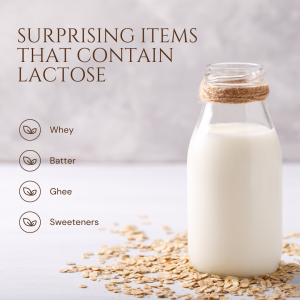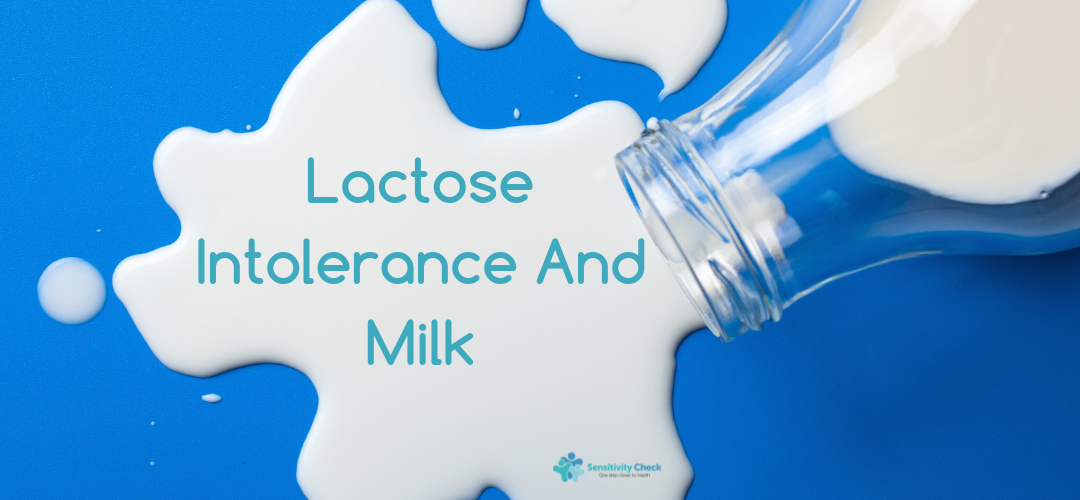One of the most popular intolerances out there is lactose intolerance. This can often be referred to as milk intolerance, though lactose is found in more foods and drinks other than milk. So, what’s the deal with it? And how is lactose even connected to milk? Below, you’ll learn about the connection between them, how to understand what your body needs and doesn’t need, and an explanation as to why an ultimate test is just what you need to put you in charge of your dietary needs!
What is lactose?
Unless you have taken the time to learn about the basics of lactose and how it works, you probably just think that lactose is a part of milk. Which it is, of course. More specifically, lactose is a type of sugar that is found in milk and milk byproducts.
Your small intestine contains an enzyme called lactase that is responsible for breaking down and absorbing lactose into your body. If you lack that enzyme. If you have lactose intolerance, your body cannot absorb that sugar, and it causes indigestion if you eat or drink it.
Does all milk contain lactose?
Traditional milk and dairy products contain lactose. For example, milk, butter, yoghurt, and ice cream all contain lactose. These products are made from cow, goat, or sheep milk. All mammal-sourced milk naturally contains lactose.
Even if you see a jug of milk that says “dairy-free,” you will want to check the ingredients because it may refer to being free from cow’s milk but still contains goat’s milk. This will still cause milk intolerance symptoms.
What other products contain lactose?
The ones mentioned above are your more obvious, classic sources containing lactose. After all, they contain milk. We already know that traditional milk naturally contains lactose. However, there are many other types of products that can contain lactose, even if they don’t appear to contain milk. Some of the most common ones to watch out for include the following:
- Cereal
- Pastries, bread, crackers, and cookies
- Salad dressing
- Sauces and condiments
- Protein shakes
These are a little less obvious, but you can see how they could technically contain lactose, right? But wait, there’s more. When it comes to packaged food, there are even more problematic ingredients to watch for! These ones are even less obvious and include the following:

- Whey
- Casein
- Buttermilk
- Batter (breadcrumb batter or something like waffle batter)
- Low-fat spreads
- Synthetic cream products
- Sweeteners
- Ghee
Even to the most astute shopper at the market, that’s a lot to watch for on every single item that you add to your trolley. That’s also assuming that you are, in fact, reacting to lactose. Food intolerances are very difficult to isolate, even with much effort.
For that reason, we recommend our ultimate test. This is a new, updated test that now includes milk and dairy testing. This test now tests even more than it did previously, but with no price difference. For this reason, you’ll be able to get the accurate information you need in your test results but also get some help and support in knowing what to avoid. That’s worth it when it comes to saving time while reading ingredients.
How to deal with milk intolerance
What does it mean to deal with milk intolerance and live with it? Is there going to be a list of foods that you can’t eat, ever? It isn’t nearly as dire as a milk allergy, which would require a strict avoidance diet. But a milk allergy is very different from a milk intolerance.
When it comes to dealing with a milk intolerance on a daily basis, there are a few things that you can do to help make it as simple as possible.
Determine if you are intolerant to milk
This sounds silly, but it’s important. There’s no point in learning how to avoid milk if you aren’t actually lactose intolerant. Consider ordering the ultimate test so that you can get accurate and timely results as to what’s going on in your body. The best information will be the most accurate, after all.
Get a feel for your sensitivity level
You can have mild, moderate, or severe lactose intolerance. Some people with mild intolerances can eat ice cream and have a glass of milk with only a few reactions. Those with moderate intolerances may be able to handle small services of each. And those with severe intolerance may have uncomfortable symptoms from a simple teaspoon of cream or milk added to their tea. Adjust your diet to your sensitivity level, and you’ll find it will give more flexibility than you might think.
Explore alternatives
If you are severely milk intolerant, you can find lots of alternatives that are dairy-free. Oat milk and soy milk tend to be the most popular choices. Almond milk is also a great choice. You can get lactose-free cheese and ice cream, etc. Explore your local market and see what they can offer you!
With this information as your guide, you can see now how lactose and milk connect. This is a very rich subject that can have dramatic effects on your diet if you need to make a change. As always, starting with the right information and detail will be an ideal starting point to make the best out of the situation.


